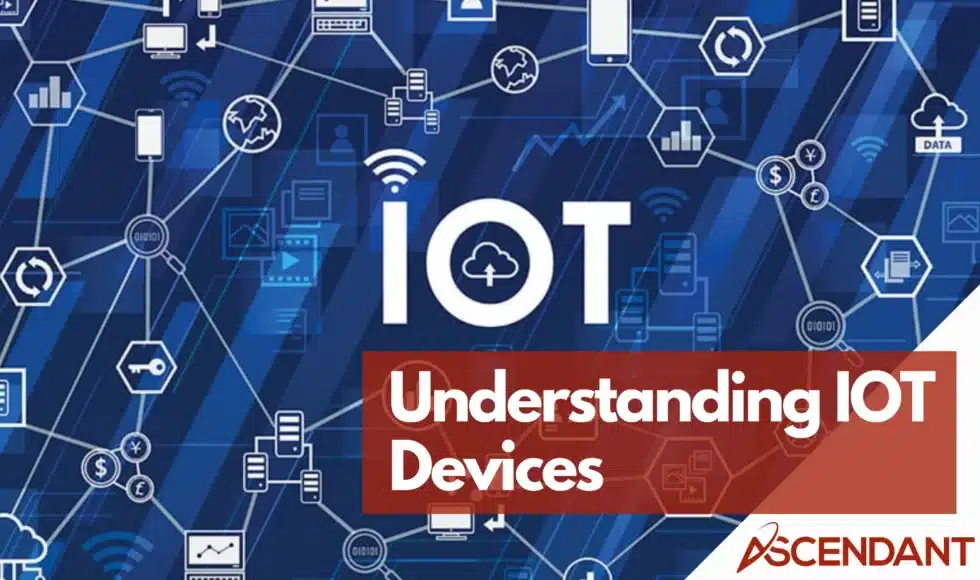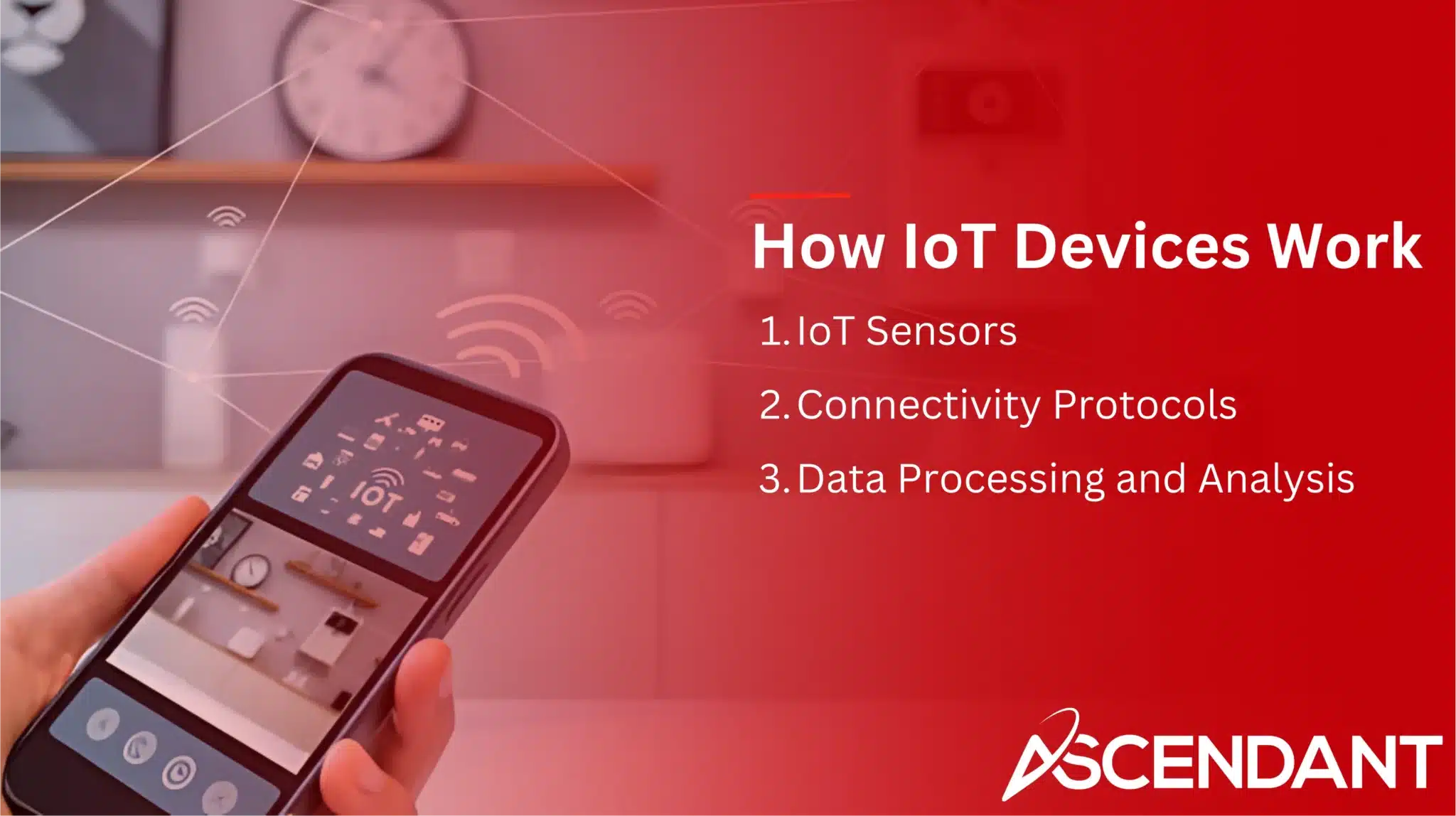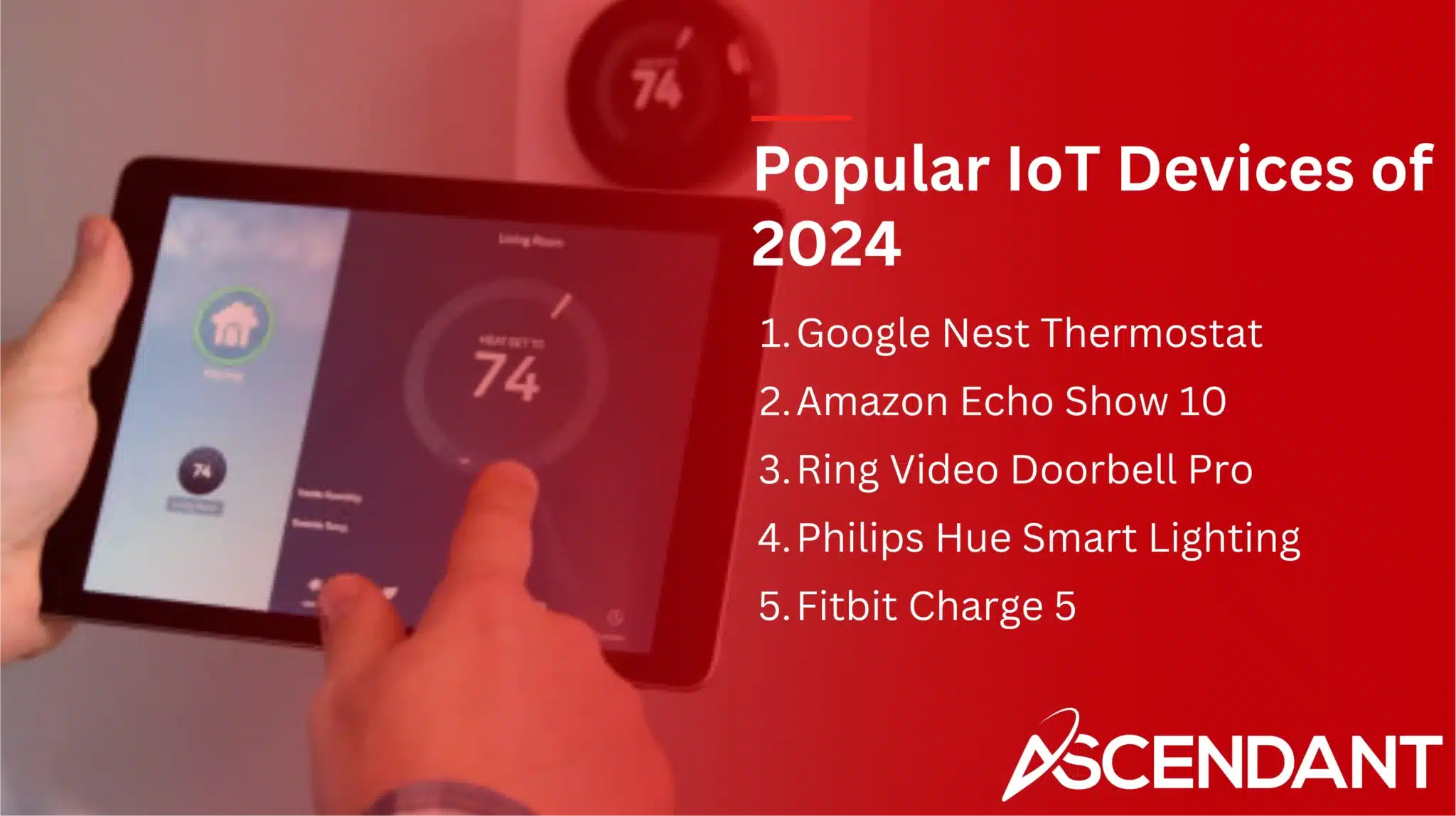The Internet of Things (IoT) is revolutionizing our daily lives and business operations by enabling a myriad of common devices to connect to the internet. This encompasses an array of gadgets, from those designed for smart homes to sophisticated industrial instruments, which can interact autonomously and improve both ease-of-use and productivity. In this article, we will delve into how IoT functions, examine its advantages as well as hurdles it faces while also highlighting the most prominent IoT devices that have emerged in 2024.
Key Takeaways
- The Internet of Things (IoT) connects diverse devices, enabling them to communicate autonomously, enhancing both consumer convenience and business efficiencies.
- IoT devices rely on key components like sensors, connectivity protocols, and data processing methods to function effectively and gather actionable insights.
- While IoT presents numerous advantages, challenges such as security risks, privacy concerns, and interoperability issues must be addressed for optimized use.
Understanding IoT: The Basics
IoT technology encompasses a vast array of devices connected to the internet, forming an extensive network known as the Internet of Things (IoT). These devices are equipped to operate and interact autonomously, eliminating the need for direct human involvement. The realm of IoT spans various gadgets from simple sensors and actuators to sophisticated domestic appliances and elaborate industrial equipment, all linked via wireless networks.
Embedded with sensors that perceive environmental alterations, these smart home devices amass critical data. They have capabilities such as modulating thermostats based on user settings or external conditions, automating garage doors opening mechanisms, and managing illumination systems within homes. By facilitating such automation tasks seamlessly into everyday living spaces contributes notably towards enhancing comfort levels while also elevating efficiency.
In a commercial context, the deployment of IoT offers substantial benefits by delivering instant analytics concerning operational performance parameters, driving process automation, and curbing manpower expenses. Advancing quality in service provision standards,. Inter-device connectivity through M2M communications propels continuous fluidity in operations without necessitating manual intervention. Spanning from mundane household tools right up to intricate machinery designed for industry use – the scope encapsulated under IoT applications reflects both diversity and profound potential implications across varied sectors.
How IoT Devices Work
To grasp the functioning of IoT devices, one must consider various essential elements such as sensors, connectivity protocols, and data processing techniques. Collectively, they are responsible for collecting information, transferring it appropriately, and interpreting this data to allow these devices to execute operations independently.
Every part is vital in understanding the operational framework that underlies IoT.
IoT Sensors
In the domain of IoT, sensors serve as essential operatives for recognizing environmental fluctuations and amassing pertinent sensor data. These diminutive components are integrated into a multitude of physical objects, ranging from wearable devices to industrial machinery, endowing them with the capability to interface with the physical world and procure information in real time. Smart thermostats, for instance, leverage temperature sensors to autonomously modulate heating and cooling apparatuses thereby ensuring an equilibrium between comfort levels and energy utilization.
This sensor-collected data acts as the vital fluid that sustains IoT systems. It empowers devices with the ability to make calculated choices, automate operations efficiently, and yield meaningful insights. Sensors play an indispensable role in enhancing both functionality and efficacy across various applications—be it through scrutinizing air purity via Foobot or capturing outdoor venture metrics using Fitbit Charge 5’s integrated GPS—all testament to their significance within IoT deployments.
Connectivity Protocols
Communication protocols serve as the pivotal elements that empower IoT devices to connect and exchange data proficiently. Protocols like Zigbee, Wi-Fi, and Bluetooth grant these devices the ability to link up without wires, facilitating efficient data transfer and smooth interplay. The selection of a particular protocol typically hinges on the unique needs and uses within an IoT system.
Nevertheless, this multiplicity of protocols can sometimes obstruct interoperability because disparate manufacturers may adopt different standards which complicates direct communication among devices. This predicament underscores the significance of establishing standardized communication protocols that would bolster both performance and cohesion for IoT devices when interacting across various platforms.
Data Processing and Analysis
Sensors gather information and send it through established connectivity methods, after which this data must be subjected to processing and analysis. Such tasks may occur directly on the device, known as edge computing, or in cloud-based platforms — choices that hinge on both design imperatives and system needs. Edge computation helps reduce bandwidth demands while enabling immediate decision-making capabilities, while employing cloud solutions provides access to sophisticated analytical tools along with extensive storage options. Systems are tasked with the responsibility of proficiently gathering data even as they partake in exchanging said data.
The examination of IoT-derived information is pivotal for extracting valuable insights and elevating efficiency across operations. Providers offering cloud services persistently refine their approaches towards IoT by concentrating efforts on heightened management mechanisms for devices alongside superior capacities for analyzing such gathered datasets. These technological advances pave the way for instantaneous understanding that supports knowledge-driven verdicts aimed at refining business processes.
Types of IoT Devices
IoT technology is remarkably multifaceted, covering an extensive array of devices tailored for various uses. This includes domestic appliances such as intelligent thermostats and smart TVs, alongside industrial instruments and bespoke medical devices, all of which are revolutionizing multiple industries.
Subsequent parts will detail the assorted IoT devices available and their distinctive capabilities.
Consumer IoT Devices
Devices in the realm of consumer IoT are crafted to augment both convenience and productivity within daily routines. These encompass a variety of smart home devices that perform automatic adjustments, such as modulating ambient temperature or lighting according to the user’s set preferences. Notable examples include intelligent speakers, wearable gadgets like the Fitbit Charge 5 and advanced vehicular technology commonly known as smart cars. The assimilation of these components into households simplifies regular chores, bolsters operational efficacy, and improves overall comfort for users.
Organizations harness real-time data procured from consumer IoT devices to adapt swiftly to evolving situations and specific requirements dictated by consumers. Continuous surveillance via these systems grants instantaneous admission to essential information which facilitates more informed decision-making processes. For example, Foobot plays a significant role in improving indoor air quality by monitoring levels of pollutants. Similarly, with its integrated GPS capability, Fitbit Charge 5 enables tracking outdoor exercise activities independently without relying on smartphones.
Industrial IoT Devices
Industrial IoT technology plays a crucial role in boosting operational efficiency and enabling predictive maintenance. By employing advanced solutions, including digital control systems and intelligent agricultural equipment, industrial processes can be closely monitored and refined. This proactive approach to identifying potential problems before they lead to expensive interruptions significantly enhances productivity while reducing operating expenses.
The incorporation of AI into the realm of industrial automation is fueling an uptick in demand for more sophisticated IoT platforms. Such progress allows businesses within various industries to exploit data-centric insights that optimize supply chain functions and improve overall efficiencies operationally.
The influence of Industrial IoT devices has been transformative across multiple sectors such as logistics, production, and city administration, marking significant shifts in how these areas operate.
Medical IoT Devices
IoT gadgets in the medical sphere are transforming patient care by enabling smart health management and remote tracking capabilities. These tools encompass wearables that track vitals, advanced smart implants, and systems for monitoring patients remotely. They all aim to elevate the quality of healthcare while positively impacting patient outcomes. For example, fitness trackers observe critical indicators such as heart rate, caloric intake, and blood oxygen saturation to provide instantaneous data that aids in superior health maintenance.
The incorporation of IoT technology into healthcare devices facilitates incessant observation and rapid reaction to any alterations in a patient’s condition. This advancement not only augments the level of patient care, but also lightens the load on medical facilities by allowing for distance-based consultations along with prompt medical actions when necessary.
The significance of IoT within healthcare continues to surge forward, heralding an era marked by enhanced efficiency in medical services tailored specifically for individual patients.
Key Benefits of IoT
IoT technology delivers a multitude of advantages that are significant and wide-ranging, permeating different industries through numerous IoT applications. It boosts efficiency and security while offering instantaneous insights, propelling digital change.
Delving into these principal benefits sheds light on the substantial contributions of IoT to both our personal existence and commercial enterprises.
Enhanced Efficiency
The use of IoT technology has been a substantial boon to productivity and efficiency within various industries. By better managing resources and cutting operational expenses, companies can enjoy considerable cost reductions. For example, energy consumption is optimized and downtime minimized by implementing smart connected chillers from Johnson Controls through their energy management systems.
In the domain of smart IoT applications, constant performance surveillance allows for on-the-fly tuning that curtails wastage. Energy expenditure can be expensive. Be reduced with gadgets such as the Nest thermostat, which acclimatizes itself to user settings while autonomously regulating temperature control in an effort to conserve energy.
Improved Security
The integration of smart devices through IoT has bolstered home security, offering a robust safeguarding system. With the capacity for remote monitoring, individuals can vigilantly oversee their property from any location. An example is the Ring Video Doorbell Pro, which delivers instant alerts and enables users to tailor motion detection areas for superior protection.
Remote management of smart security systems offers an added measure of comfort and reassurance. Whether it’s keeping tabs on a parcel delivery or ensuring the wellbeing of family members, IoT-based security solutions are revolutionizing our approach to guarding our residences and possessions.
Real-Time Insights
Analyzing real-time data within IoT frameworks is key to recognizing trends, providing suggestions, and pinpointing potential problems. This function plays a vital role in making knowledgeable choices and refining business operations. Take activity monitors as an example. They leverage real-time information to track health metrics, thereby advancing the management of personal well-being.
Within smart cities, instantaneous knowledge gleaned from IoT solutions proves fundamental for bolstering city administration and elevating residents’ living standards. By providing prompt data and implementable intelligence, IoT enables both entities and persons to enhance their decision-making capabilities and swiftly adapt to evolving circumstances.
Popular IoT Devices of 2024
Looking forward to 2024, a range of IoT devices are poised to significantly influence our daily routines by offering improved ease of use, heightened efficiency, and advanced health tracking capabilities. This demonstrates the multifaceted nature and considerable promise held within IoT technology.
Below is an enumeration of some leading IoT gadgets for the year 2024 along with their distinctive attributes that make them stand out.
Google Nest Thermostat
The Google Nest thermostat is a prime example of how IoT devices can optimize home environments. This smart thermostat connects to the cloud and can be managed locally via an app, allowing for real-time adjustments and energy savings. It learns user preferences and automatically adjusts heating and cooling, ensuring comfort and efficiency.
Remote control capabilities make the Nest Thermostat a versatile addition to any smart home. Insights into energy usage help users optimize settings, reduce their carbon footprint, and save on utility bills.
Amazon Echo Show 10
The Amazon Echo Show 10 enhances the smart home experience as a multifunctional device. With its 10.1-inch display, the device boasts a 10.1-inch display. HD screen provides clear and vivid imagery ideal for streaming videos and presenting information. The rotating display is particularly impressive, moving with the user to provide uninterrupted engagement.
To its visual features, this device connects seamlessly with other IoT devices to voice-control various smart home elements such as lighting systems, thermostats, and security cameras from one unified point of command. It facilitates video calls via Alexa, offering superior quality interactions with loved ones.
Ring Video Doorbell Pro
The Ring Video Doorbell Pro represents a considerable improvement in the realm of home security, offering surveillance through high-definition video and enabling live interaction with anyone at your door. This intelligent device is consistently vigilant, detecting any motion or unusual activities, thus keeping homeowners informed about the goings-on outside their residence. The inclusion of two-way audio permits real-time conversations with visitors, providing an added measure of safety and convenience.
Enhancements to this system include customizable zones for motion detection that allow homeowners to concentrate on monitoring particular segments they deem important. This smart doorbell not only acts as a deterrent to potential trespassers, but also delivers tranquility by assuring owners that there’s a constant watchful eye over their property.
Philips Hue Smart Lighting
Philips Hue Smart Lighting revolutionizes the smart home experience by enabling remote control and personalization of lighting. Users have the flexibility to craft an ideal atmosphere for any event, be it a relaxing night in or a lively celebration. These lights can sync with games, music, or movies to create an absorbing environment that elevates your entertainment.
The allure of Philips Hue is heightened by the convenience of manipulating your lighting from any location. Regardless if you’re present at home or elsewhere, you possess the capability to tailor your lighting preferences according to your desires. This position Philips. Hue is a multipurpose and energy-conscious choice perfectly suited for contemporary lifestyles.
Fitbit Charge 5
Equipped with sophisticated tracking capabilities, the Fitbit Charge 5 serves as an all-encompassing health and fitness monitoring instrument. It meticulously records heart rate, REM sleep stages, and a multitude of physical exercises to furnish users with precise knowledge about their wellness state, aiding them in reaching their health objectives.
Its ability to monitor sleeping patterns is among its most notable attributes. It provides critical data on the quality of sleep, which allows individuals to make educated choices for enhancing their sleep.
As a comprehensive gadget crucial for those dedicated to improving their health and fitness regimen, the Fitbit Charge 5 emerges as an indispensable equipment.
Challenges and Concerns in IoT
Understanding the potential pitfalls of IoT is essential for leveraging its numerous advantages while minimizing its risks. It presents various challenges and concerns that must be tackled, such as security vulnerabilities, issues regarding privacy, and obstacles to interoperability. Addressing these areas is key to fully capitalizing on the benefits offered by IoT.
Security Risks
The IoT ecosystem is grappling with substantial security issues. The absence of robust encryption in these devices can lead to heightened susceptibility to cyber-attacks, as it makes unauthorized data access easier for malicious actors. The escalating menace of malware and ransomware specifically targeting IoT technology threatens users by potentially locking them out and extorting payment for regained access.
Compounding these concerns is the deficiency in standardized protocols among IoT devices, which creates obstacles in applying uniform security defenses across the board. To counteract these vulnerabilities, there needs to be an emphasis on strengthening security systems and promoting standardization initiatives aimed at protecting both individual IoT units and their interconnected networks.
Privacy Issues
Privacy concerns are paramount in the IoT landscape due to the vast amounts of personal data collected by these devices. Organizations must provide education and awareness about security systems and best practices to ensure users understand how their data is being used and protected.
Robust privacy policies are essential for protecting user data while leveraging IoT technology. Educating users about privacy settings and the risks associated with data sharing is crucial for maintaining trust and security in the IoT ecosystem.
Interoperability Challenges
Interoperability difficulties are frequently encountered due to the wide range of IoT devices and platforms. When attempting to interact or collaborate, gadgets made by various companies can face compatibility problems, leading to reduced functionality that may necessitate extra setups or alternative solutions.
It is crucial for the advancement of interoperability across varied IoT devices to embrace unified standards and communication protocols. Standardization in these areas enables the IoT environment to facilitate unobstructed communication and elevate overall device functionality on multiple platforms.
Future Trends in IoT
The outlook for IoT is promising, as a number of key trends are expected to define its trajectory in the near future. These include the melding of AI and machine learning with IoT systems, the proliferation of smart cities infrastructure, and the development of sophisticated IoT platforms. Such advancements will serve as catalysts for progress and expansion within the realm of IoT.
To delve deeper into these upcoming shifts, we should examine some specific trends that will emerge shortly.
AI and Machine Learning Integration
Incorporating AI and machine learning with IoT devices is anticipated to transform numerous sectors substantially. By delivering sophisticated data analysis and recognizing patterns in the amassed information, these technologies improve the functionality of IoT devices. Predictive analytics, fueled by AI, empowers these devices to anticipate trends and foresee potential problems, thus allowing for preemptive actions for upkeep and enhancement.
When equipped with AI and machine learning capabilities, IoT devices are empowered to independently make informed decisions using real-time data. This synergy boosts efficacy while diminishing reliance on human oversight. Such an amalgamation expands capabilities, paves the way for more intelligent systems, and drives innovation across diverse industries.
Expansion of Smart Cities
Urban environments are progressively integrating IoT technologies to upgrade urban governance and elevate the quality of life for residents. Connected devices within these smart cities enable close monitoring and effective management of numerous aspects of city living, such as:
- Managing vehicular traffic
- Regulating energy consumption
- Handling waste disposal
- Ensuring public safety
As a prominent trend in the domain of IoT, the development of smart cities heralds a future marked by enhanced efficiency, sustainability, and habitability. By harnessing the power of IoT solutions, municipalities can make better use of resources, diminish their ecological footprint, and improve service delivery to citizens.
Advanced IoT Platforms
The development of IoT platforms has been considerable, keeping pace with the increase in connected devices to ensure improved management capabilities. These platforms come equipped with strong device management tools that enable straightforward integration, setting adjustments, and observation of a myriad of IoT devices. Features such as automated updates and diagnostic functions significantly improve user interactions.
These platforms have also embraced sophisticated data handling features like instantaneous analytics and edge computing to derive valuable insights from gathered data. As IoT platforms continuously advance, they are transforming the ways in which we manage devices and analyze data, thereby amplifying the efficiency of IoT applications.
Summary
The Internet of Things (IoT) is revolutionizing our daily experiences by enhancing efficiency, bolstering security, and providing instantaneous insights. This transformative technology extends from domestic smart appliances to complex applications in industry and healthcare sectors, accelerating progress across diverse fields.
Nevertheless, the proliferation of IoT comes with its set of hurdles like security vulnerabilities, privacy issues, and difficulties in achieving system compatibility. As we proceed into the future with AI integration and machine learning at play within expanding smart cities and evolving cutting-edge IoT frameworks, we will undoubtedly influence the trajectory of internet-connected innovations. To foster a more interconnected and streamlined global environment requires both embracing these developments while also overcoming existing obstacles related to IoT implementation.
 Frequently Asked Questions
Frequently Asked Questions
What is the Internet of Things (IoT)?
IoT, or the Internet of Things, comprises a web of devices that interact and share data automatically, enabling them to function independently without requiring direct human control.
This innovation improves productivity and interconnectivity across diverse applications.
How do IoT devices work?
Utilizing sensors, IoT devices gather data and use connectivity protocols to transmit this information. They then apply processing methods to examine the collected data and respond accordingly.
What are the key benefits of IoT?
Organizations and individuals can optimize resources, protect properties, and make well-informed choices thanks to the principal advantages of IoT, which include heightened efficiency, bolstered security, and the acquisition of insights in real-time.
What are some popular IoT devices of 2024?
In 2024, popular IoT devices include the Google Nest thermostat, Amazon Echo Show 10, Ring Video Doorbell Pro, Philips Hue Smart Lighting, and Fitbit Charge 5.
These devices showcase the growing integration of smart technology in everyday life.
What are the challenges and concerns related to IoT?
The challenges and concerns related to IoT primarily involve security risks, privacy issues, and interoperability challenges. Addressing these issues is crucial for the safe and effective deployment of IoT technology.



